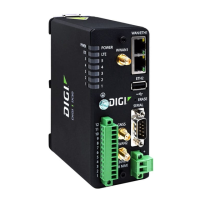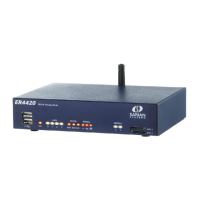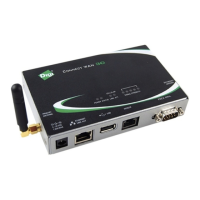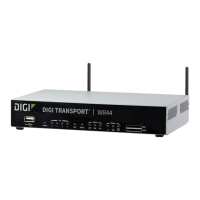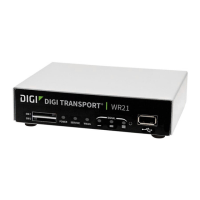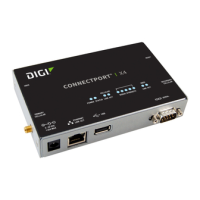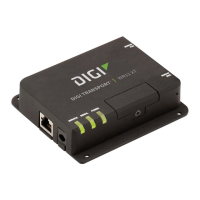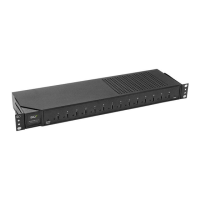Applications Digidevice module
IX14 User Guide
482
5. Use the set() method to make changes to the runtime database:
>>> runt.set("my-variable", "my-value")
>>>
6. Use the get() method to verify the change:
>>> print(runt.get("my-variable"))
my-variable
>>>
7. Close the runtime database:
>>> runt.stop()
>>>
8. Use Ctrl-D to exit the Python session. You can also exit the session using exit() or quit().
Help for using Python to access the runtime database
Get help for reading and modifying the device runtime database by accessing help for
digidevice.runt:
1. Log into the IX14 command line as a user with shell access.
Depending on your device configuration, you may be presented with an Access selection
menu. Type shell to access the device shell.
2. At the shell prompt, use the python command with no parameters to enter an interactive
Python session:
# python
Python 3.6.13 (default, May 9 2021, 22:49:59)
[GCC 8.3.0] on linux
Type "help", "copyright", "credits" or "license" for more information.
>>>
3. Import the runt submodule:
>>> from digidevice import runt
>>>
4. Use the help command with runt:
>>> help(runt)
Help on module acl.runt in digidevice:
NAME
acl.runt - Python interface to ACL runtime database (runtd).
...
5. Use Ctrl-D to exit the Python session. You can also exit the session using exit() or quit().
Use Python to upload the device name to Digi Remote Manager
The name submodule can be used to upload a custom name for your device to Digi Remote Manager.

